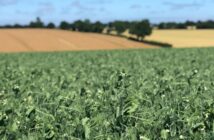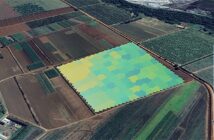A recent Twitter poll suggests that 38% of oilseed rape growers intend to drill their 2022 crops in late July or early August, while another 20% will delay planting until after the main cabbage stem flea beetle migration has taken place.
With the new cropping cycle just around the corner, ADAMA recently hosted a Twitter poll to find out when growers plan to drill their new crops of winter oilseed rape. Of the 238 people that responded, the majority (42%) have no set date in mind and will let the weather dictate when drilling can commence.
Of the remaining participants, 38% stated that they intend to drill in late July or early August to enable the crop to establish and grow away from the threat of damage caused by adult Cabbage Stem Flea Beetles. The remaining 20% intend to delay drilling until September in order to allow the CSFB migration to have taken place.
“Deciding when to drill oilseed rape is always a tricky conundrum,” explains Dr Bill Lankford, ADAMA’s herbicides technical specialist, “not least because of the need to balance the costs of ensuring the crop establishes viably against its overall profitability.
“Essentially there’s no right or wrong answer as no two farms are the same and neither are any two rotational strategies. Instead, growers must weigh up the pros and cons of drilling early versus the benefits of waiting until after the CSFB migration has taken place.
“It’s interesting to see that 20% of respondents are willing to delay drilling until after the migration of adult flea beetles: if conditions later in the year enable these growers to establish a decent crop one would expect a lower risk of feeding damage and a reduced numbers of eggs being laid.
“On the other hand, 38% are clearly determined to get a crop in and established before the CSFB migration. Whilst this strategy has the benefit of enabling the crop to build sufficient biomass that any feeding at the time of adult beetle migration will be inconsequential, there is always the risk that egg laying will be significant, and a forward crop will foster a large population of larvae which could cause notable damage later in the season.
“For the 42% who are prioritising good establishment conditions over everything else, this is understandable given the testing conditions in recent cropping cycles.”
Irrespective of the strategy chosen, having an effective herbicide plan will be critical to ensuring the crop’s success. “It’s understandable that growers might be reticent about applying a pre-emergence herbicide until they can be confident of a viable crop,” Bill continues, “but missing out on this key timing could put the subsequent crop on the backfoot from the very start.
“In practice, our trials have shown that early drilled crops tend to benefit most (especially in terms of black-grass control) when treated with metazachlor (Sultan 50 SC) as either a pre- or early post-emergence application. Without this early season protection, crops will have to compete against weeds which may become too big to control effectively by the time subsequent herbicides such as propyzamide, clethodim and propaquizafop (e.g. Falcon) are applied later in the year.




